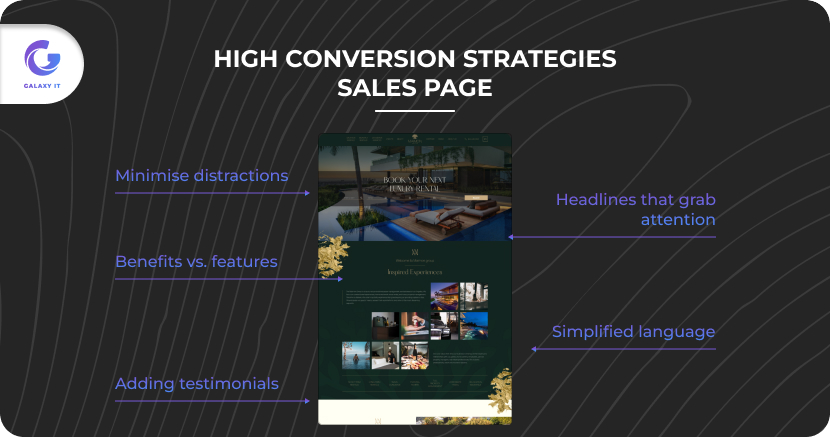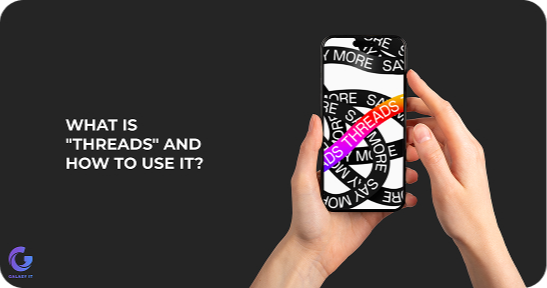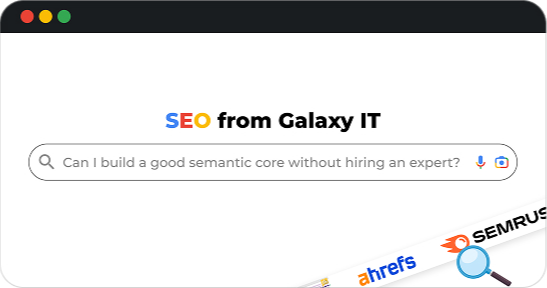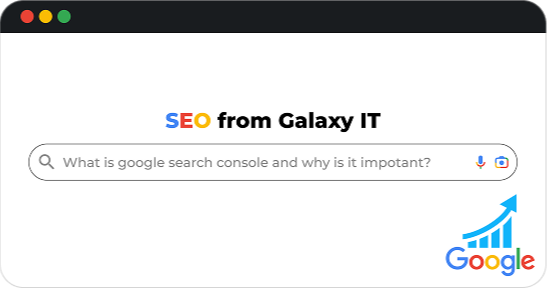How to create a high-converting page that will help you sell
- 04.07.2024
- 1 views
- 5 min
What is a sales landing page?
Landing pages are incredibly versatile and can be utilized at various points in the buyer's journey to achieve different objectives, such as lead generation or event registrations.
However, sales landing pages have a distinct purpose: to drive sales. They achieve this through a meticulously crafted narrative that illustrates how the product or service can enhance the customer's life.
What is a sales landing page?
Unlike other landing pages that aim to gather contact information, sales landing pages must persuade visitors to make a purchase. Convincing potential customers to spend money is considerably more challenging than simply obtaining their email addresses.
By incorporating the following strategies into your landing page design, you can transform them into high-converting sales pages.
Long sales page vs short sales page
This is one of the fundamental decisions you'll need to make for your landing page. If your product or service is complex or falls into a higher price bracket, you'll need to provide thorough explanations and put in more effort to persuade visitors to make a purchase. In such scenarios, a long-form sales page is the best approach.
For products that are inexpensive and straightforward, short sales pages with most of the content above the fold are more practical.
Long-form pages allow you to address customer objections and pain points in detail, whereas short-form sales pages cater to visitors who lack the patience to read lengthy content or don't require much convincing.
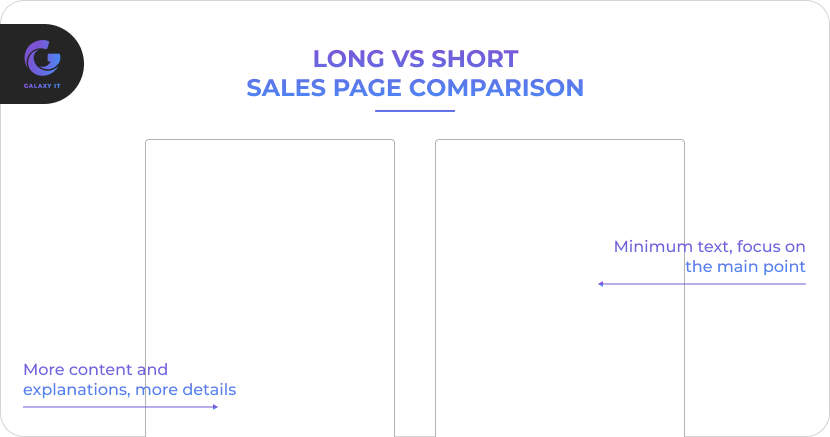
Key elements of a high converting sales landing page
Craft effective headings
Even if you have invested considerable time nurturing leads and educating customers about your business and product, a landing page that fails to immediately capture their attention will not convert effectively.
Craft headlines and subheadings that allow visitors to quickly grasp the content of your landing page. For complex products or services, use a detailed headline and layer the page with subheadings that reinforce the value proposition. This approach not only grabs the attention of your target audience but also positively influences their buying decision.
Speak in your customers' language
Simplifying technical jargon, presenting the product or service from the customer's perspective, and highlighting benefits rather than features can make the content more appealing to visitors. Here are some strategies to enhance and expand this approach:
- Simplify Technical Language: Avoid using overly complex or technical terms that may confuse or alienate potential customers. Instead, use straightforward and easy-to-understand language that resonates with a broader audience. This ensures that the message is clear and accessible to all visitors.
- Adopt the Customer's Perspective: When explaining your product or service, frame it from the customer's point of view. Focus on addressing their needs, challenges, and pain points. Show empathy and understanding, and illustrate how your offering directly benefits them.
- Highlight Benefits Over Features: While features describe what a product does, benefits explain why those features matter to the customer. Emphasize how your product or service improves the customer's life, solves their problems, or meets their needs. This shift in focus helps create a stronger emotional connection with your audience.
- Appeal to Emotions: Emphasize how your product or service will make customers feel. Use vivid imagery and compelling language to paint a picture of the positive experiences and outcomes they can expect. For example, instead of just listing a feature, describe how it brings convenience, joy, or peace of mind.
- Use Real-Life Examples and Testimonials: Include customer testimonials, case studies, and real-life examples that demonstrate the benefits of your product or service. This adds credibility and allows potential customers to see how others have successfully used and benefited from your offering.
- Incorporate Visuals and Multimedia: Use images, videos, and infographics to visually represent the benefits of your product or service. Visual content can help break down complex information and make it more engaging and memorable for visitors.
Minimize navigation and distractions
Sales pages typically omit navigation links in the header or footer. Since visitors arrive at a post-click landing page with a specific purpose, presenting the entire array of products or services can distract them from making a purchase. External links, which may be beneficial during the early stages of the buyer's journey, are not just unnecessary on a sales page—they can be counterproductive, diverting customers away from the sale.
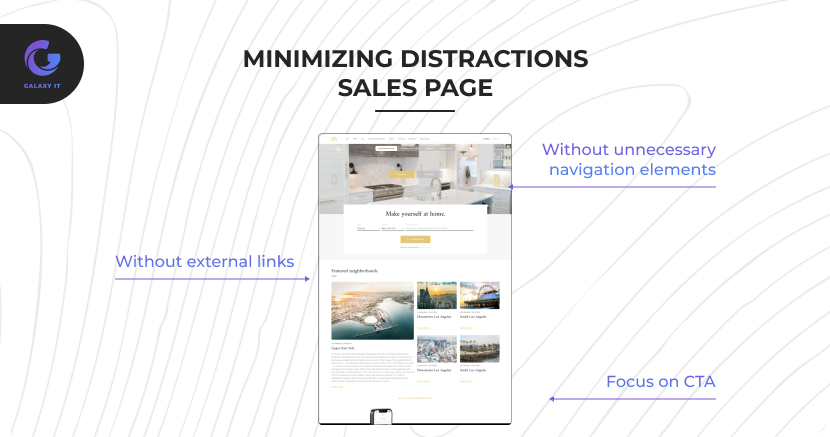
Keep experimenting
There is no magic formula for creating high-converting landing pages, but they don't happen by chance either. Any type of landing page can achieve high conversion rates. By experimenting with different strategies to identify the most effective ones for a specific campaign and applying these strategies to every landing page, businesses can consistently develop pages that drive conversions.
We specialize in creating customized, high-converting landing pages
In conclusion, crafting high-converting landing pages requires a strategic approach. Simplifying technical jargon, adopting the customer’s perspective, and emphasizing benefits over features make your content more appealing. Engaging headlines and subheadings quickly capture attention, while the choice between long-form and short-form pages depends on the complexity and cost of your product. Avoiding distractions by omitting navigation links ensures visitors remain focused on making a purchase.
Experimenting with these strategies allows businesses to discover what works best for their campaigns. At Galaxy IT, we specialize in creating customized, high-converting landing pages that resonate with your audience and drive results. Join us, and let’s transform your landing pages into powerful conversion tools.
